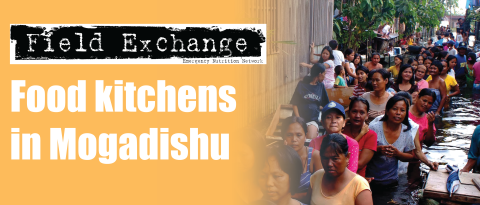UNICEF framework fosters collaboration in Afghanistan

Courtyard garden in Afghanistan
Summary of published report1
Recent nutritional survey data have shown that malnutrition amongst women and children under five is endemic in Afghanistan. Fifty four percent of under-fives are stunted, 38% are underweight, 38% are anaemic and over 70% suffer from iron and iodine deficiency. Twenty-one percent of reproductive age women are underweight, 70% iodine deficient, 48% iron deficient and 25% anaemic. Given the importance of problem definition in developing policy to decrease malnutrition in Afghanistan, a recent paper examines the varied perspectives on the food and nutrition situation amongst diverse stakeholder groups. The following questions are addressed: i) using the UNICEF malnutrition framework as a guide, how is the food and nutrition situation understood by stakeholders at different administrative levels (community, provincial and national) and ii) how do perspectives on problem definition, underlying causes and solutions vary between the health and agriculture sectors.
The study was conducted from May 2006 to February 2007 in four locations in Afghanistan. Community level data were obtained from two districts within Balkh province with differing water availability, through key informant interviews and focus group discussions. Provincial level data were gathered in Mazar-i-Sharif, the capital city of Balkh province. Eighteen indepth key informant interviews were held with stakeholders, primarily in the agriculture and health sectors. Thirty-eight national level interviews were conducted with stakeholders based in Kabul, replicating the methodology used in Balkh province. The results of the study illustrate how the UNICEF framework may be adapted to a country context and used to organise over 250 issues related to the food and nutrition situation.
The issue most frequently mentioned by stakeholders at all administrative levels was economics. Political insecurity was also noted at each administrative level as an overarching barrier to progress on improved food and nutrition. Community-level key informants and provincial and national stakeholders frequently highlighted nutrition knowledge as the secondary food or nutrition problem. Men and women's focus groups, however, did not perceive a lack of nutrition knowledge. Many professionals noted their own lack of training in nutrition and lack of institutions in the country offering such education. Issues such as nutrition training, basic professional skills and nutrition policy were salient at Balkh province and national levels, but not at the community level. The implications of these differences relate to where policy makers devote energy and resources. Some policy makers acknowledged a tension between the emphasis on capacity building of professionals and building the capacity of communities to achieve food and nutrition security, resulting in a diversion of resources from community activities.
The data collected suggest that acknowledgement of a policy problem depended on having technical knowledge about public nutrition and food security. Stakeholders from agriculture and health sectors had varying understandings of malnutrition and food security concepts. Apart from the few with specific nutrition training, most agriculture or health sector stakeholders did not highlight the documented high prevalence of chronic malnutrition or specific micronutrient deficiencies. Health sector stakeholders defined food and nutrition problems often using broad malnutrition terms or highlighting less prevalent but dramatic conditions, such as severe acute malnutrition. Micronutrient malnutrition (with the exception of anaemia) was typically mentioned in the context of interventions rather than in the context of patients affected by deficiencies. Agriculture sector stakeholders broadly defined food and nutrition problems in terms of dietary quality, which was seen as an outcome. The differences in views found in Afghanistan illustrate that both nationals and expatriates, particularly within the agriculture sector, are using definitions from different historical periods with different emphases within and between sectors. This lack of common definition complicates policy dialogue and poses a barrier to achieving consensus in programme and policy making. Health sector and community stakeholders addressed food security indirectly, by reference to components of food availability, access and/or utilisation. These findings highlight the importance of having a shared vocabulary and access to relevant technical information to facilitate policy discourse and common understanding or problem definition.

Women attending a health clinic
Provincial and national data show that stakeholders tended to provide information about underlying causes of malnutrition pertaining to their professional field. Underlying causes emphasised by health sector stakeholders were largely located in domains within the purview of the health sector, with occasionally mention of issues pertaining to agriculture and other sectors. Similarly, there was rarely discussion of health sector issues by agriculture sector stakeholders. Domains noted by stakeholders from both agriculture and health sectors often highlighted different issues within those domains - for example, in the socio-political environment domain, agriculture sector stakeholders noted a need for agricultural extension and health sector stakeholders highlighted the role of a strong nutrition policy.
These findings suggest that to foster greater linkages between agriculture and health sectors in nutrition across administrative levels and sectors, existing efforts at disseminating the UNICEF framework are necessary but still insufficient. Many barriers still exist to achieving a common problem definition and coordinated solutions. To make the framework more useful it should be adapted to local conditions as has been done in this study. This helps to identify sectoral perspective and biases in problem definition and to determine underlying causes and solutions. Using a locally adapted version of the UNICEF framework facilitates inclusion of community viewpoints in the process of policy development. These perspectives are often omitted by policy makers who frequently lack direct contact with community-level stakeholders. This formative research provides numerous insights into pathways for agriculture-health sector collaboration in the Afghan context and a methodology applicable and adaptable to similar initiatives elsewhere.
1Levitt. E, Pelletier. D and Pell. A (2009). Revisiting the UNICEF malnutrition framework to foster agriculture and health sector collaboration to reduce malnutrition: A comparison of stakeholder priorities for action in Afghanistan. Food Policy, vol 34 (2009), pp 156-165
Imported from FEX website


